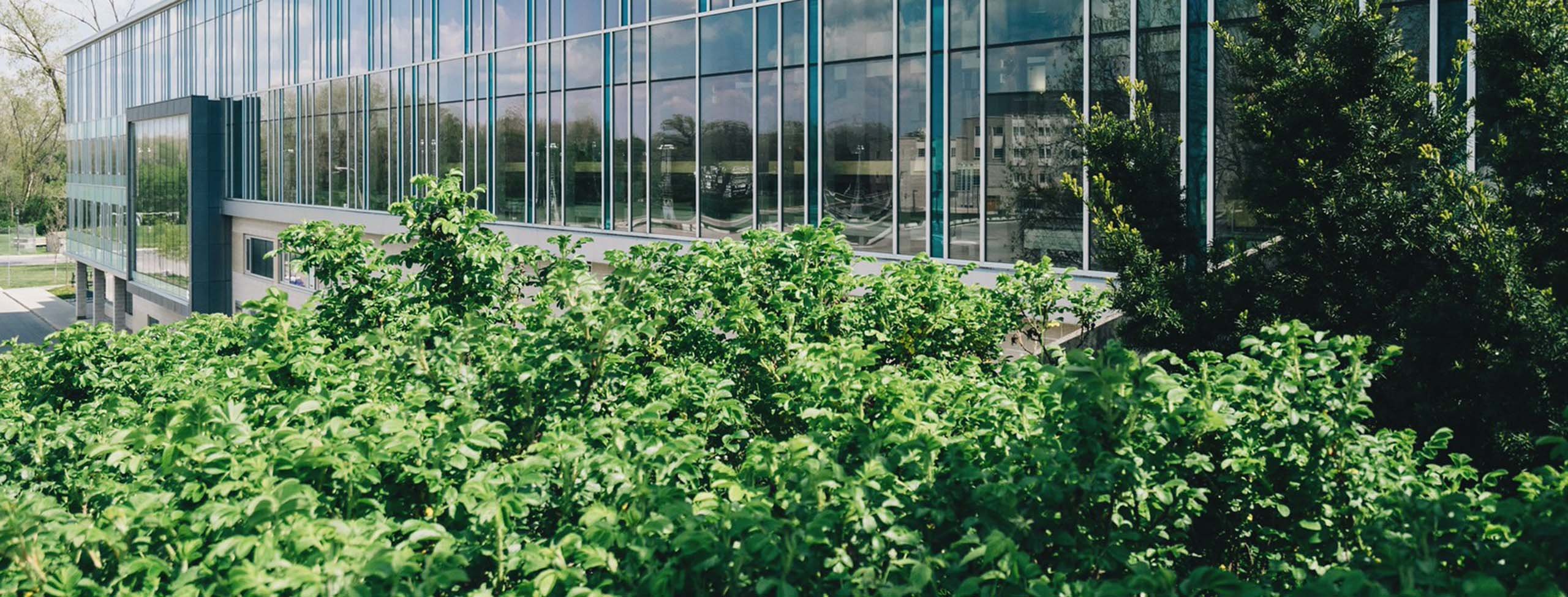
4 September 2024 • 8 minute read
“Greening” your leases: The cornerstone of climate resilience and readiness in commercial real estate
As published in The Real Estate Finance Journal, Winter 2024
Many large companies have reported that they are not sufficiently prepared to meet emerging climate-risk reporting and verification requirements, or prepared to take advantage of climate-related opportunities, according to a new report released by global professional services firm Accenture. Although the report was not sector specific, these findings remain applicable to commercial real estate.
Regardless of a company’s readiness, climate reporting and responses are, and will likely continue to be, required of commercial real estate owners and tenants through various channels: whether from local building benchmarking and performance laws in the US, demands of international companies with operations in both the European Union (EU) and the US, a landlord’s or tenant’s corporate sustainability and ESG initiatives and public commitments, or a range of other means.
A “lack of readiness” for addressing climate risks and climate reporting can create extreme physical, financial, and compliance vulnerabilities for commercial real estate owners, investors, and tenants. Although not always immediately apparent to market actors, “greening” commercial leases offers parties a platform for addressing these kinds of vulnerabilities.
As noted in our ESG and Commercial Real Estate Case Study, establishing legally enforceable cooperation between building owners and tenants to address these issues, typically through a lease, can be a key starting point. This cooperation often plays a significant role in achieving sustainability goals, whether those goals belong to the landlord or the tenant.
What is “greening” a lease?
“Greening” a commercial lease means that landlord and tenant have agreed to include specific terms (“green lease provisions”) in their lease that outline environmental building performance targets, cooperative processes for achieving those goals, and the responsibilities and liabilities of each party with respect to their respective sustainability goals. A lease may be “greened” at initial negotiations, lease renewals, or by lease amendment. Green lease provisions may be broad or more targeted, depending upon the needs and nature of the parties.
Why can green lease provisions be such a fundamental part of a sustainability plan?
In commercial real estate, landlords and tenants are dependent on each other to meet their respective goals, manage environmental and climate risks (including compliance with emerging building performance laws) at their physical locations, and obtain the necessary data to assess and report progress. Green lease provisions help landlords comply with sustainability mandates, and they may also provide significant benefits to tenants. For example, many tenant companies, both nationally and internationally, have committed to varying degrees of sustainable operations, and those commitments require action by landlords. Green lease provisions can help landlords align their building management activities and upgrades with tenant sustainability goals.
The commercial lease is the legal document that governs the relationship between landlord and tenant, and it determines how the property may or may not be used. Incorporating sustainability goals and commitments within the lease agreement helps align the interests of the landlord and tenant on green matters and ensures that commitments are legally enforceable.
Defining the universe of applicable sustainability mandates: Moving beyond green building rating systems
The first step in "greening" a lease is to define the universe of applicable or potential sustainability targets, mandates, and operational requirements. Parties should recognize that sustainability targets and requirements for US buildings no longer solely come from traditional environmental laws and green building rating requirements. They now arise from updated energy conservation codes, net-zero building laws, internally generated corporate mandates, warranty requirements for high-tech green building systems, participation in voluntary incentive programs, government funding, climate and financial risk disclosure regimes, greenwashing litigation, and even EU requirements for properties of international companies with offices in the US.
Key green lease provisions
After defining the scope of potential sustainability requirements the landlord and tenant will consider, companies can benefit from addressing both process requirements (including coordinated adaptation to evolving regulations and best practices) and performance outcomes.
Examples of important green lease provisions include:
- Requiring reasonable cooperation in meeting identified targets. Landlords may require reasonable tenant cooperation to achieve sustainability initiatives and comply with climate laws. Tenants often control energy and water usage, which largely determine a building’s energy and water efficiency, as well as climate emissions. Tenant cooperation provisions aim to ensure that a tenant takes reasonable steps to follow the landlord’s sustainability requirements. These sections often require tenants to better manage their energy or water usage, train their employees in more efficient practices at the building, and use best practices when operating their spaces.
- Data collection and management. Many jurisdictions require landlords to report data and information to show their progress and compliance with statutes and regulations. Often, only tenants have access to this information, which may result in unexpected compliance problems for landlords unless there is a disclosure requirement in the lease. Examples of data that tenants may need to share with landlords include occupant energy and water usage, peak occupancy hours, plug usage and loads, and recycling efforts. Data-sharing provisions outline what data tenants must report and establish special confidentiality requirements for landlords to protect the tenant’s sensitive information.
- Cost sharing of capital upgrades for efficiency and resilience. Capital expenditures for major sustainability upgrades may be substantial, such as HVAC upgrades, elevator modernization, and stormwater management retrofits. However, sustainability upgrades may directly benefit tenants by reducing their utility and maintenance bills. Green lease provisions usually allocate the costs of upgrades to the tenant on an amortized basis over an agreed-upon timeframe (typically over a period shorter than other kinds of capital expenditure pass-throughs) to ensure a fair distribution of costs and benefits.
- Green tenant improvements and alterations. Tenants often have the right to alter or improve their leased premises during the lease term at their own cost, subject to landlord’s reasonable review and approval. Green alteration and tenant improvement provisions require that any such construction and alterations comply with sustainability goals and targets for the whole building set forth in the lease.
- Green transportation (including EV charging stations). Green lease provisions often consider (i) how to accommodate the needs of new types of low-emission or electric vehicles (EV) on site, and (ii) how to encourage tenant uptake of green transportation vehicles or practices. Green transportation provisions aim to ensure that landlords have the necessary rights to install EV (or other, such as solar) infrastructure, and that they may promote the usage of green transportation. Beyond EVs, landlords may reserve rights to build bike racks, or changing facilities, to promote human-powered transportation. These provisions aim to ensure that both parties understand who has the rights to construct, operate, use, and ultimately pay for these facilities.
- Adaptive management, annual performance reviews, and flexibility. Landlords and tenants may need time to experiment with different cooperative arrangements, building systems, and operational approaches. Determining what will work best for landlords and tenants in a particular building with specific sustainability targets often requires flexibility and a willingness to adapt as more information becomes available and performance can be assessed. Green lease provisions make this kind of adaptability possible when they support routine progress evaluations and enable future adjustments to targets and processes as needed to meet overarching sustainability objectives.
Emerging building performance standards: Regulatory compliance concerns
As noted above, while voluntary corporate commitments, climate disclosure laws, EU regulations, and demands in the office market may drive sustainability targets in commercial real estate, another catalyst of change is the building energy performance standards that are being established by law in many states and cities in the US.
President Joe Biden launched the National Building Performance Standards Coalition, which supports state and local governments that commit to drafting and enacting building performance policies and programs. Multiple major cities have joined the coalition, including Boston, Chicago, Los Angeles, New York, San Francisco, and Washington, DC. Along with these local jurisdictions, six state governments have joined the coalition: California, Colorado, Maryland, Massachusetts, Oregon, and Washington. Green lease provisions are likely to play a significant role in achieving compliance in these jurisdictions.
Moving forward
The momentum for addressing climate risk, mitigating climate change, and enhancing climate resilience is driving significant changes in the construction and operation of commercial real estate. Multiple states and major cities have joined the National Building Performance Standards Coalition, with more expected to follow. Climate reporting is increasingly capturing indirect emissions, compelling companies to work proactively with suppliers and infrastructure providers to make the built environment more climate-responsive. Additionally, companies and individuals are increasingly feeling the effects of EU directives and regulations in the US.
Updating leases, lease forms, and letters of intent (LOI) with green lease provisions can help protect landlords and tenants from unexpected sources of physical, financial, and compliance risk, while also creating efficiencies in achieving sustainability targets.
For more information, please contact the authors.


